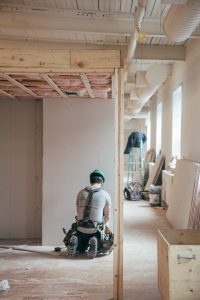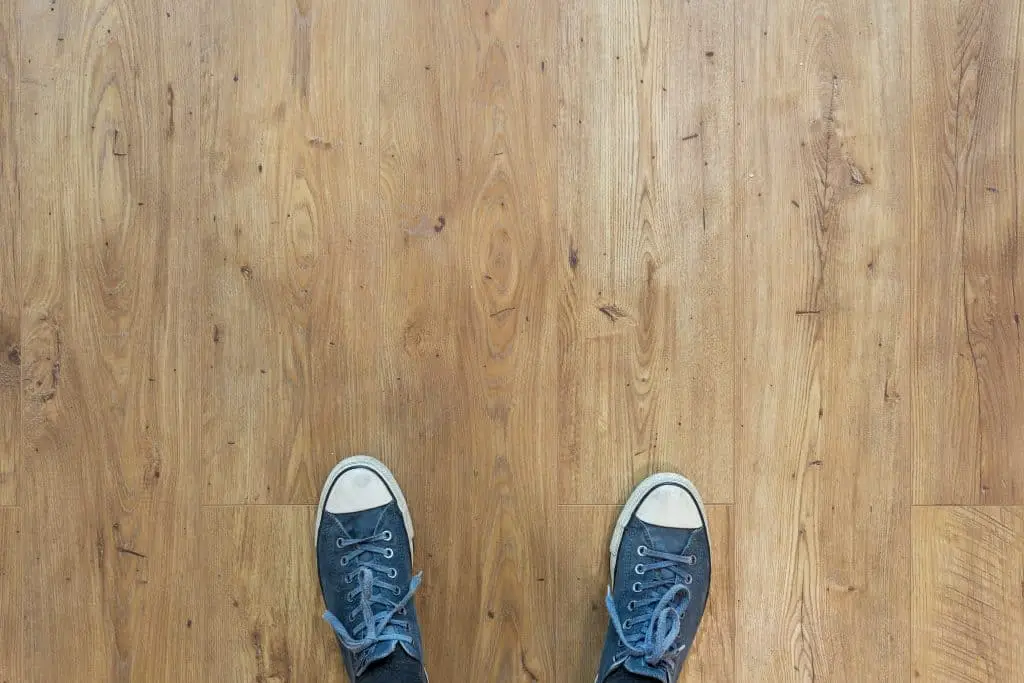
The squeaky floor is a common home irritant. They announce your arrival and mark every progress you make in the home. Some squeaks are a result of the natural aging process of your floor but others may be caused by improper installation of the floor parts. Whatever the cause may be, you don’t want to put up with it.
How do you fix squeaky floors in a manufactured home? The correction method can depend on the cause of the noise. Fixing wooden floorboards is a bit different from fixing detached plywood subfloors or joists yet these two are some of the common culprits. So, the first thing to do would be to find the cause of the noise and then proceed from there. Locating the cause is normally a two-man job. One person walks on the floor to make it squeak, while the other goes under the floor to listen and locate the source.
Some Floor Squeaking Causes
Virtually all causes involve two flooring parts rubbing or interlocking with each other, including:
- Staples or nails that have failed to hold the floorboard tightly and are now starting to rub through the holes in the floorboard
- Two adjacent floorboards are rubbing on each other
- Bowed or uneven joists rubbing against a malfunctioning subfloor
- Subfloor fasteners pulling out and into the underlying joists
- Friction between the ductwork and the floor
Stopping the friction between the rubbing parts of the floor effectively fixes the squeaks. This means you will try to control the two parts of the floor and prevent at least one from rubbing on the other.
Here Is How To Fix A Squeaking Floor
First off, send one person with a flashlight under the floor to locate the source of the noise as you stroll on the floor. The person can access the underbelly of the mobile home via a crawl space or the basement.
1) Small Gaps Between the Floor’s Joists and The Subfloor’s Underside? Insert Dry Shims into The Gaps
The most common cause of squeaky floors is the formation of spaces between the underside of the subfloor and the joists.
Joists are supposed to attach firmly to the subfloor, failure to which your movements on the floor could the detached surfaces to rub against each other.
Silencing this sort of squeak is just straightforward: find a few quality shims and insert them in the gaps, then add a squirt of glue to stick them into position. That’s going to take you less than 10 minutes.
NOTE: Do not hammer your shims or force them way too far into the gap; you might cause the floor to rise, creating a bump on the surface.
The job of shims is to fill the gaps and prevent friction. Also, note that gaps may only be visible from one of the joists. Be sure to investigate both sides.
Once you have established the glue has dried up, proceed to trim the shims with a utility knife or oscillating multi-tool if the shim is overly thick.
2) Long Gaps Running the Whole Length of the Joist? Fill Them with A Constructive Adhesive
Tiny shims are used to fill small gaps between joists and the subfloor as mentioned above, but what about long gaps covering a large part of the joist? Not even a series of shims would silence squeaks emanating from this sort of problem.
Instead, we use fast-set construction adhesives that perform well against large voids, cracks, and gaps in or between wood surfaces. I’d recommend Gorilla® All Purpose Instant Grab 9-ounce Cartridge Construction Adhesive. You can force it deep into the gaps using a caulking gun. When the adhesive sticks and dries in the gaps, you’ll stop hearing that squeak.
3) Twisted or warped joists? Nail a dry board along the troubled joists
Your joists could be twisted, warped, bowed, or shrunk. These problems become almost inevitable if the joists were installed while damp. Typically, space would form between the floor and the wooden joists as they continue to experience changes. Then, when you walk on the floor, the subfloor and/or the flooring rubs on the screws and nails by moving up and down, causing squeaking sounds.
Fixing twisted, warped, bowed, or shrunk joists is easy, just install a long and quality Douglas fir 2×4 alongside the troubled joist. Begin the process by smearing plenty of constructive adhesive on the surface of the 2×4 and the joist.
Press your 2×4 hard flat on the joist and slide it tightly against the subfloor’s underside. Hammer the bottom edge of your 2×4 to fix it tightly on the subfloor. Finalize the process by securing the 2×4 slab to the joist using 3” drywall screws in spaces of 8”.
4) Add Blocks of Wood Between Joists
This is yet another easy way of persuading your floor to shut up. It involves adding blocks of wood between two unstable joints. Two moving joists can cause friction on their extreme ends where they join the wall. The movement may buildup to cause squeaks in those ends.
Cut a few blocks of dry wood with the same dimensions as joists. For example, if your manufactured home came with 2×7 floor joists, consider cutting wood blocks with a 2×7 dimension. Three or four blocks are enough, provided they fit snugly between the two troubled joists.
Start by applying sufficient construction adhesive on the sides of the blocks. Insert the bocks between the joists while observing an even distance between them. The sides of the blocks with the construction adhesive should stick on the subfloor and the joists.
Conclude the installation by fastening the blocks with 3″ drywall screws by drilling through the sides of your joists. Avoid placing the blocks very close to each other or very tightly against the subfloor.
5) Wooden Floorboards Are Chafing Against the Bolts or Nails? Drive A Few Short Screws Through the Underside
Sometimes the friction between the floorboards and the nail of bolt fasteners may produce enough squeaks to call attract your attention. The nails serve to hold down the flooring but may begin to chafe against the surface of the holes in the floorboards with sustained movements on the floor.
Either way, the solution to squeaks emanating from nails and bolts can be eliminated by driving several short screws through the underside of your subfloor all the way up into the bottom part of the completed floor. Do not use long screws that may end up penetrating past the topmost end of the floor
6) You Completely Have No Access to The Friction Areas? Lubricate The Surface
Lubricants can be used to reduce the friction between the remotest areas of the floor you will never comfortably reach. Chafing could be happening in the hidden parts of the subfloor, joists, or wooden floorboards. The source should at least be located.
Get yourself talcum powder or lock lubricant – I’d recommend DuPont Teflon Easy Entry Lock Lubricant. Powdered graphite can be a good alternative if you don’t want lubes on your floor – I’d recommend Consolidated Chemical & Solvents Ultra Fine Graphite Dry Lubricant. Take either option and sprinkle it into the chaffing joints and walk around on the floor to let the lubricant deep into the cracks. Use a hot damp cloth or vacuum cleaner to remove the leftover powder and lube from the floor.
Regular construction lubes don’t work all the time – the squeaks may return barely weeks after applying the talcum powder or lube. In such a case, you might want to try out silicone-based lubricants known to work well on wood and steel surfaces. You can start with 3M Silicone Lubricant – Dry Version.
7) The squeaks are originating from the top surface of the floor? Use Sqeeeeek No More
If you can clearly see the friction points on the surface of the floor, either between wooden parts or within a split wood, you can use Squeeeeek No More, a relatively famous counter-snap kit with screws. This kit can also be used on surfaces where lubricant failed to eliminate the problem. The screws are often coated with heavy-duty to help them through without causing a run or ruining the carpet. To understand how this kit is used, watch this elaborate guide on YouTube.
The most advantageous thing about Squeeeeek No More is its ability to work perfectly with virtually every flooring product out there including vinyl sheets, tiles, hardwood planks, and carpeting. The downside, however, is a few screw holes it leaves on your floor, but you can choose to hide them under the carpet or fill the with a wood filler.
Conclusion
Few things in the home are as irritating as a squeaking floor. More often than not, it has something to do with two parts of the floor rubbing against each other. Sometimes all you need us a lubricant to eliminate an easily identifiable source of the surface of the floor. In some cases, you will need to send a person under the floor and locate the origin of the sounds, after which you’ll embark on an intricate correction drive, normally adding a few blocks of wood or shims.

